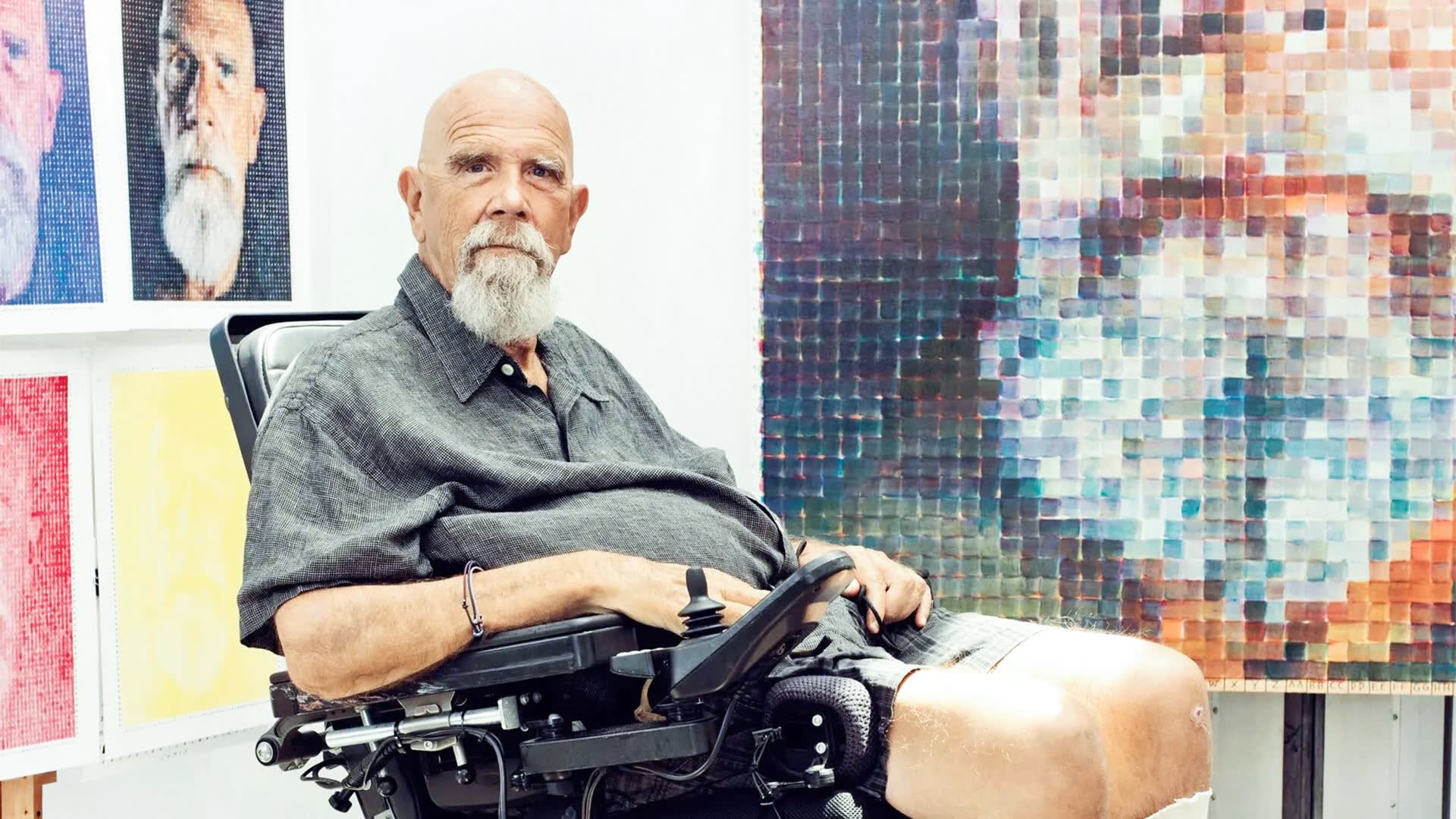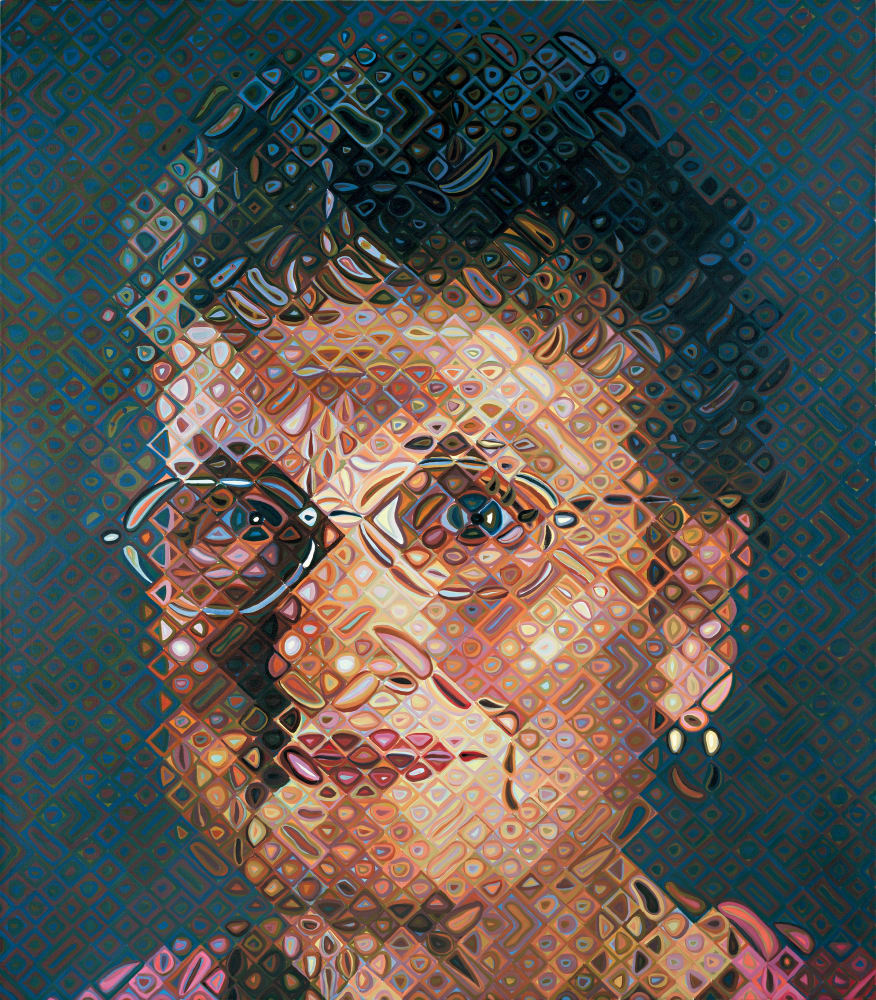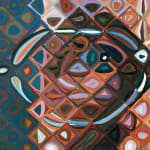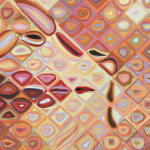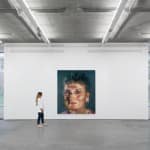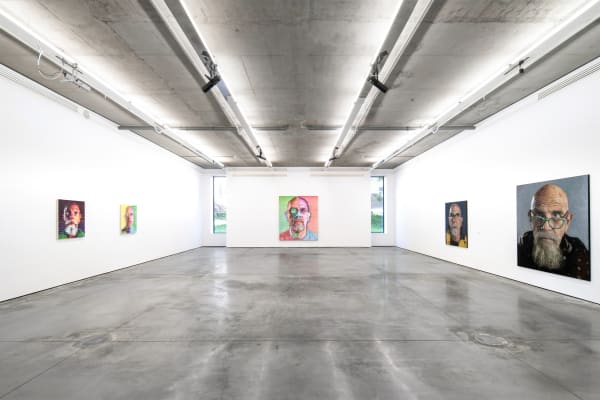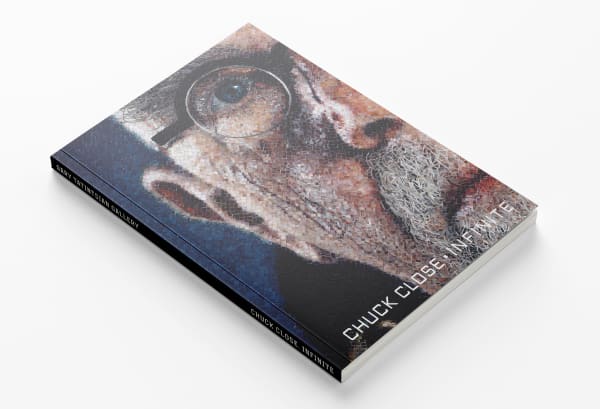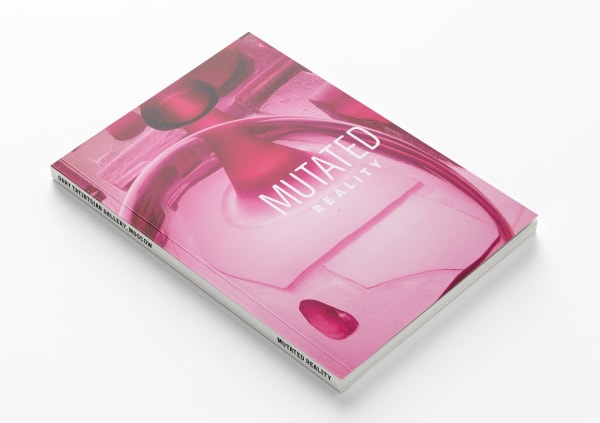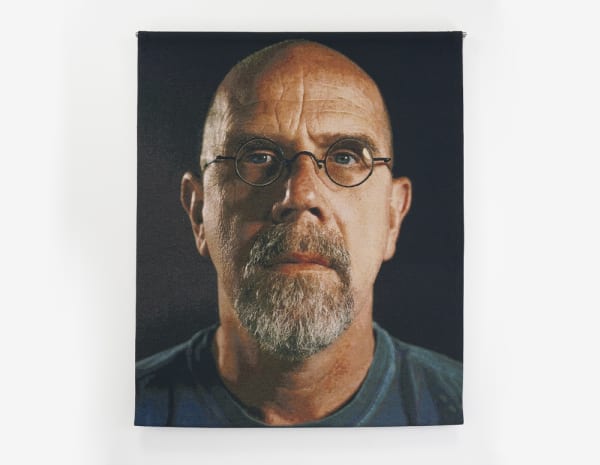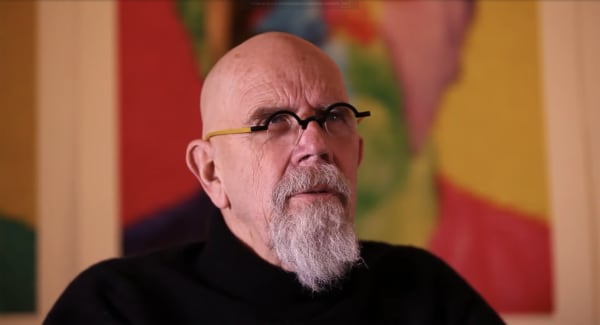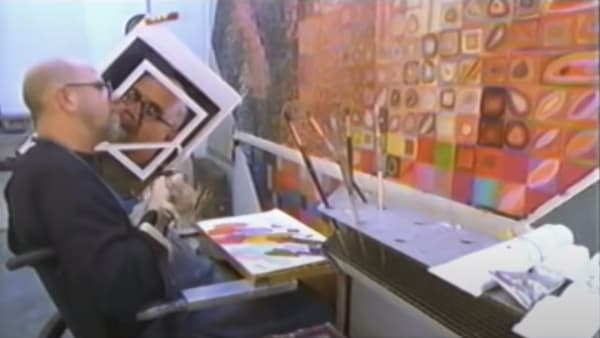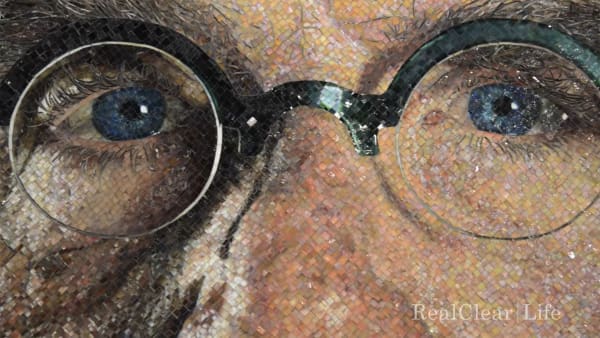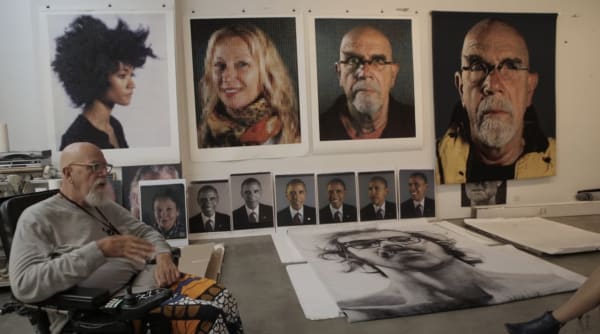Chuck Close 1940, Monroe, WA, USA-2021, Oceanside, NY, USA
-
 Photo by Ryan Pfluger for The New York Times
Photo by Ryan Pfluger for The New York Times -
A legendary portraitist and master of photorealism, Chuck Close was one of the most influential artists of his generation. Renowned for his meticulous detail and innovative techniques, he left a profound mark on both American culture and the international art world.
DOWNLOAD CV >
With an artistic career spanning more than five decades, Close transformed the conventions of portraiture, redefining the academic canon and experimenting across a range of media—from Polaroid photography and oil painting to mosaic tilework and jacquard tapestry. His portraits were constructed through tonal grids built from fingerprints, pointillist dots, brushstrokes, paper pulp, and countless other materials.
Close received his bachelor’s degree from the University of Washington in 1962. Initially immersed in abstraction, he radically shifted his style after graduating from the Yale School of Art in 1964, embracing photorealism. Using large-format Polaroid images, he began transferring them to canvas with unprecedented precision. His first solo show took place in 1967, and in 1971 the Los Angeles County Museum of Art presented a major exhibition of his black-and-white portraits, marking his emergence as a defining figure of contemporary art.
By the late 1970s, Close became one of the first artists to use the camera not only as a preparatory tool but also as an autonomous medium. His signature method involved overlaying a grid on a photograph and systematically transferring it, cell by cell, onto monumental canvases. Within each cell, concentric strokes of color built intricate optical effects that relied on “optical blending”—a phenomenon in which the human eye merges neighboring hues into a unified tone. At the micro level, the eye processes each fragment of color; at the macro level, the grid dissolves into the recognizable image of a human face.
“To observe Close at work on one of the grid portraits is like watching a man patiently working his way through the world’s largest crossword puzzle. As the painting approaches completion, it’s as if the crossword has been miraculously transformed into biography, the components finding syntax that gives them cumulative meaning.”
— Christopher Finch
Despite significant physical challenges, Close never abandoned his pursuit of portraiture. After a spinal artery collapse in 1988 left him partially paralyzed, he adapted his working methods and continued to paint with remarkable determination. He also lived with prosopagnosia (face blindness), a condition that made it difficult to recognize faces but that ultimately strengthened his commitment to portraiture. Painting became a way to preserve the visages of friends, family, and cultural figures, transforming a personal necessity into an art form of profound and universal resonance.
Close’s portraits—whether of celebrities such as Kate Moss, Brad Pitt, and Lou Reed, Presidents Bill Clinton and Barack Obama, or of fellow artists and family members—were never mere likenesses but profound psychological studies. Each work unfolds as a biography in color and form, where every imperfection becomes inseparable from identity.
“A face is a road map of someone’s life. Without any need to amplify that or draw attention to it, there’s a great deal that’s communicated about who this person is and what their life experiences have been.”
— Chuck Close
Chuck Close received the National Medal of Arts and was appointed by President Barack Obama to the President’s Committee on the Arts and Humanities. He was a member of the American Academy of Arts and Letters and served on the boards of leading arts institutions.
His work has been exhibited in hundreds of shows worldwide and is represented in major collections, including the Museum of Modern Art (New York), Tate Britain (London), the Metropolitan Museum of Art (New York), Centre Pompidou (Paris), the National Portrait Gallery (London), the Hiroshima City Museum of Contemporary Art, and the Suermondt-Ludwig-Museum (Aachen), among many others.
-
Works
Chuck Close 1940, Monroe, WA, USA-2021, Oceanside, NY, USA
Shirley, 2007Oil on canvas
243,8 × 213,4 cmFurther images
A major impact of Chuck Close’s work is his dedication to committing the faces of friends and family to memory, immortalizing them through his art. Shirley (2007) portrays the artist’s...A major impact of Chuck Close’s work is his dedication to committing the faces of friends and family to memory, immortalizing them through his art. Shirley (2007) portrays the artist’s mother-in-law, Shirley Rose, exemplifying his ability to capture the personal and intimate details of the character.
In Close’s paintings, mathematical precision merges with a sense of gauzy abstraction. The viewer’s eye, initially overwhelmed by the array of small, sensuous color fields, gradually brings the subject’s face into focus. Each square, filled with a blur of pigment, works individually as a tiny abstract painting, yet together they converge into a highly detailed and vibrant portrait that is rich in color and tone. This interplay between precision and abstraction is central to Close’s unique method of creating lifelike, yet dynamic, representations.Exhibitions
Chuck Close: Family and Others. White Cube, Mason’s Yard, London. October 10–November 17, 2007. Traveled to: as ‘Chuck Close: Seven Portraits’, State Hermitage Museum, St. Petersburg, February 29–May 4, 2008. Illustrated in catalogues
Chuck Close. Guild Hall Museum, East Hampton, New York. Aug 10–Oct 14, 2013. (Curated by Christina Mossaides Strassfield)
A Brief History of Place I. Pace Gallery, Menlo Park, California. Sep 18–Dec 13, 2014
Mutated Reality. Gary Tatintsian Gallery, Moscow. Nov 27, 2015–Mar 2, 2016Publications
Catalogue Chuck Close: Seven Portraits. Texts by Mikhail Piotrovsky, Dimitri Ozerkov and Diarmuid Costello. Interview by Ingrid Sischy. Fontanka, London, 2008. pp.4-5, 41 (illustrated)
Finch, Christopher. Chuck Close: Work. Munich; Berlin; London; New York: Prestel, 2010; 2014. p. 313 (illustrated)
Catalogue Mutated Reality. Gary Tatintsian Gallery, 2015. pp. 20, 23 (exhibition views), 25 (illustrated), 26-27 (detail), 61Chuck Close: Paintings, 1967 to the Present. Digital Catalogue Raisonné. Artifex Press, 2016
Exhibitions-

Chuck Close. Infinite
Personal Exhibition 18 Jun - 27 Nov 2021A legendary portrait painter and master of photorealism, Chuck Close is one of the most influential artists of his generation, renowned for his meticulous detail and innovative technique, which deeply...Read more > -

Mutated Reality
Group Exhibition 27 Nov 2015 - 2 Mar 2016Read more >
PublicationsViewing RoomsNewsVideo-

Up Close And Personal
© Vanity Fair -

Chuck Close: A Portrait in Progress
© The Art Kaleidoscope Foundation, MUSE Film & Television -

RealClearLife Exclusive: Artist Chuck Close Gives Tour of His Work in NYC Subway
© RealClearLifeFor the first time ever, Chuck Close gave a personal, guided tour of his 12 portraits in the new 86th Street Q train station. In conjunction with DeCubellis Films, RealClearLife... -

Meet Chuck Close
© MCA Australia
